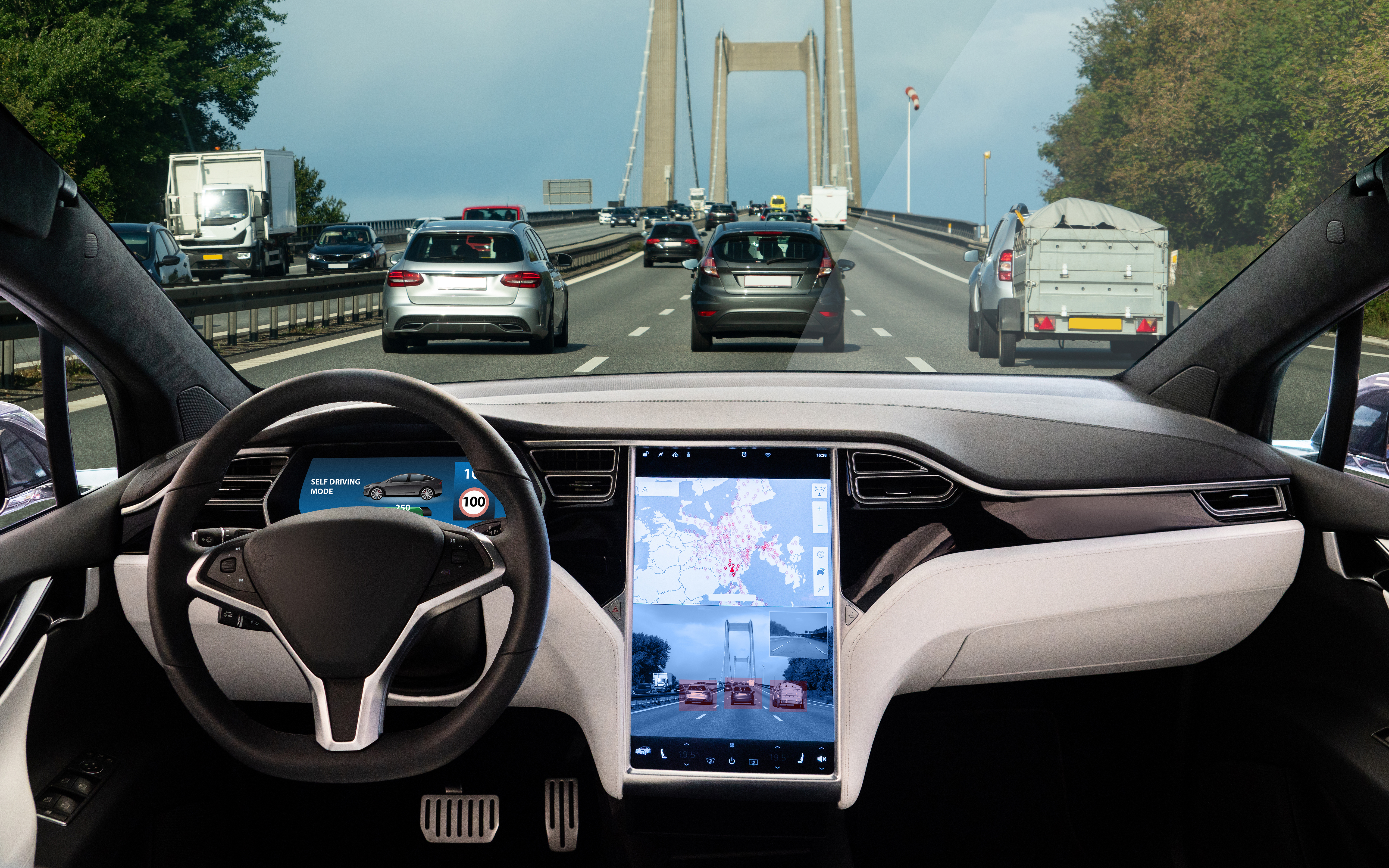
25 Apr 5G and the Future of Self-Driving Cars
Does 5G hold the key to the future of self-driving cars? In a nutshell, the answer is yes – but some of the details might surprise you.
In late 2018, both Verizon and AT&T launched 5G services, the most recent generation of mobile communication. They claim that 5G will save energy, reduce costs, and massively expand connectivity and data storage. However, PC Magazine contends that so far, “Neither [service] is broadly available, nor meaningful for much more than bragging rights. The real race to 5G, the new cellular system that will potentially transform our world, starts now.”
What Is 5G Technology?
Does 5G really hold world-transforming potential, or is that simply the marketing-speak that accompanies every flashy new product Silicon Valley introduces? After all, we’re already surrounded by everyday technology that surpasses the science fiction of just thirty years ago.
5G could increase download speeds by up to twenty times. Consider that it took a day to download a movie using 3G technology, and 4G reduced that to minutes, allowing for services like Netflix. With the power of 5G, consumers will be able to pull an entire movie onto their device in seconds.
According to Forbes, “That kind of speed changes everything. Latency would disappear. Engineers could build networks of connected vehicles that would relay relevant traffic information, and automatically maintain safe driving distances. Telemedicine would become viable. Imagine a world where doctors in Boston use cutting-edge robotics to perform delicate surgeries in Mumbai. Drones and self-driving cars would be able to build real-time 3D maps to operate more efficiently.”
Why We Don’t Have Self-Driving Cars Yet (And Why We Will)
5G could transform the world for the better – so what are we waiting for? Why won’t we have self-driving cars sitting in everyone’s driveway by 2020?
In large part, it’s because most of us don’t want them. Self-driving automobiles would eliminate the major causes of car crashes, including drunk drivers, distracted drivers, and drowsy drivers, but most Americans still don’t trust them.
Moreover, the technology just isn’t quite there yet. As Discover put it in late 2018, “The road to self-driving cars is full of speed bumps.” Most of those bumps have to do with teaching cars how to react in abnormal situations, such as when hearing an ambulance, driving on a curvy road, or seeing a group of children playing near the street. Notice that nearly all these speedbumps spring from one single problem: vehicles cannot download and interpret data fast enough to make the kinds of life-or-death decisions that human drivers make every day without even thinking about them.
Just because the technology hasn’t evolved as fast as the public’s curiosity, however, doesn’t mean self-driving cars will never dominate the roads. Quite the contrary.
Automakers are racing to produce an autonomous vehicle with the capacity to overcome those speedbumps by downloading and interpreting a tremendous amount of data in real-time. Leaders such as Tesla’s CEO Elon Musk are quickly developing their products, and US News & World Report says, “Fully autonomous cars are currently undergoing testing in several areas of the country, but none are yet available to the general public. There are, however, several cars available that feature some level of autonomous operation. “These include the famed Tesla Model S, which can steer and adjust its speed for brief periods without the driver’s intervention.
All these semi-autonomous models, however, operate using 4G, which is simply not enough. That’s why the creation of 5G systems could change everything.
For more in-depth information about autonomous cars, see the article from Electric Ride Lab: “When Will Cars Be Autonomous and Which Cars Are Fully Autonomous Now.”
How Could 5G Technology Impact the Future of Self-Driving Cars?
Simply put, it will make it possible to produce and use them on a large scale.
It will take the widespread adoption of 5G to put self-driving cars on the road for more than just an elite few. Writing in Forbes, Founder and CEO of InBounce, Inc Bijan Khosravi said, “Self-driving vehicles are just one of the incredible technologies that will be unlocked by 5G. Virtual reality, smart cities and artificial intelligence all sit on the cusp of major breakthroughs—they just need the data network to catch up.”
What will it take for data networks to expand to the extent that millions of self-driving cars will be able to operate simultaneously on the road while their passengers use hand-held gadgets with supercomputer capacities?
Enough consumers will have to want 5G badly enough to demand it and pay for it.
And that’s where this discussion morphs from one about 5G technology, which already exists, to one about international political economics, which may prove harder to navigate. In order to build a vast consumer database, companies will need to cross ethno-linguistic and geo-political borders in ways that politicians may remain skeptical about.
China, Japan, Europe, the U.S., and Korea all have their roles to play in developing 5G to the level it needs to support widespread autonomous travel. China’s masses are in love with anything technological. Japan and Korea are adopting high-speed data processing in huge numbers. The U.S., Japan, and China are all eager to lead the technological revolution. Europe holds sway through its creation of sleek automobiles that fit the ultra-tech profile; otherwise, it’s the odd man out so far. If these global giants cannot work together to bring 5G to the next level, the project is likely to fail.
While business executives and technological gurus in these countries may be eager to engage with each other, politicians operating in an increasingly tribalist environment may be slow to warm up to the idea. It will be ironic if technicians provide 5G to the public, and with it the capacity for safer, saner highways, only to be derailed by the very people who are sworn to protect their citizens.
With the advent of 5G technology, we will soon see self-driving cars. Whether they remain a toy for the wealthy or become the safest option for the average consumer will depend on how well global political leaders can see into the future.
NAI Supports 5G Now
For 5G technology to become a reality, wireless carriers and their partners are expanding the wireless infrastructure. They are adding equipment onto existing cell tower structures and establishing new micro cells. These structures all require interconnectivity.
At NAI, we have been supporting 5G technology by designing and manufacturing copper and fiber optic cable interconnects and hybrid connectivity. Our assemblies and harnesses are used to connect radios to antennas and for other cell tower or micro cell applications.
NAI is dedicated to supporting 5G technology and our customers in the wireless sector. Our engineers are available to discuss your connectivity requirements for 5G or other wireless needs.

